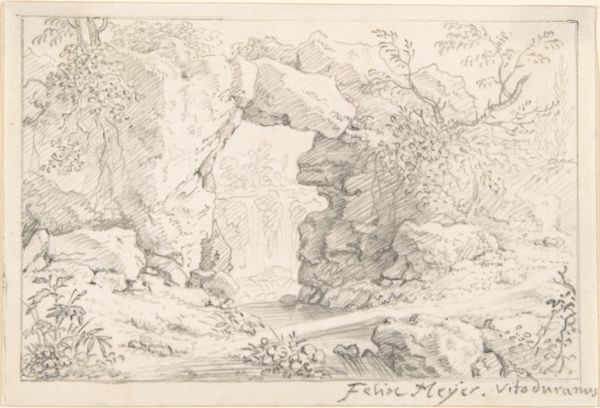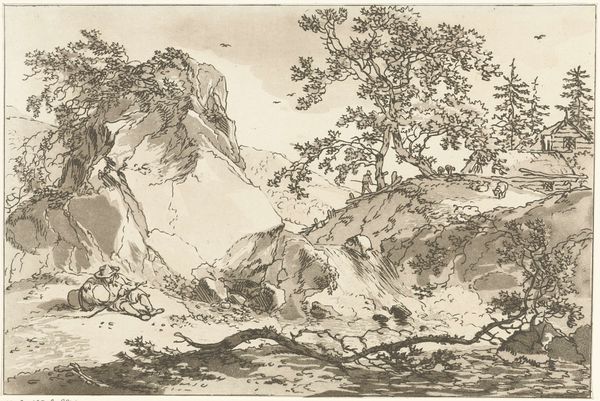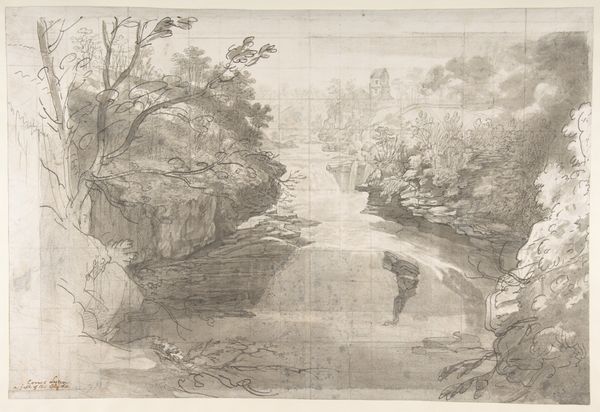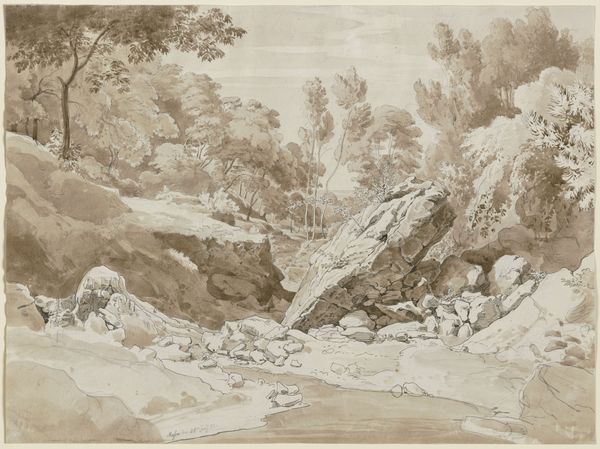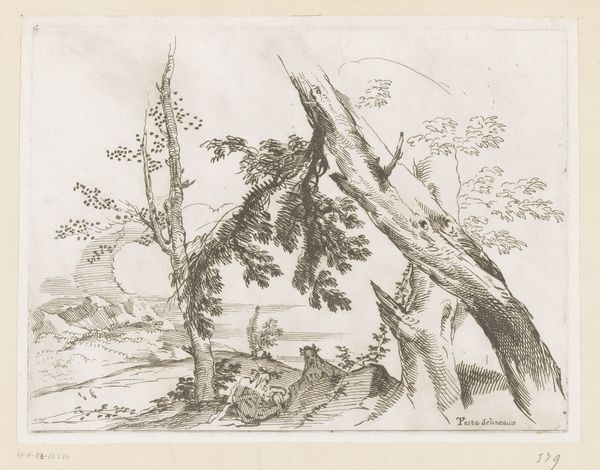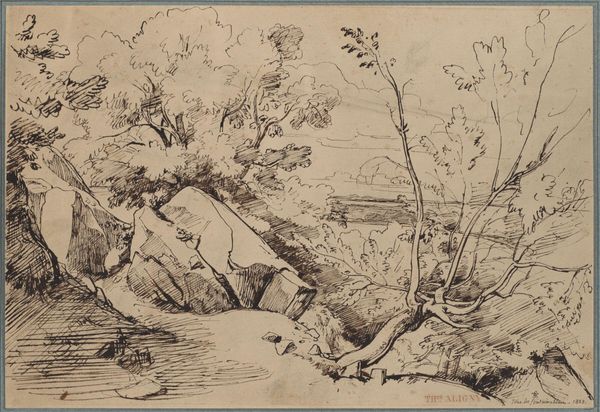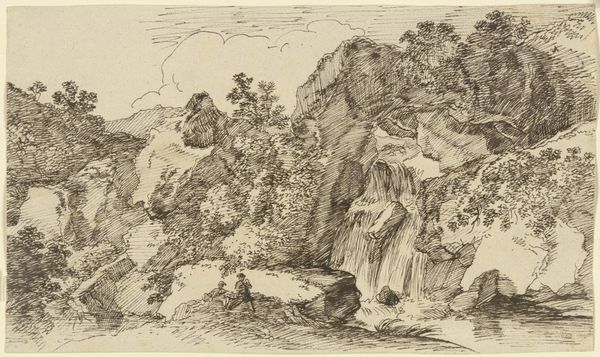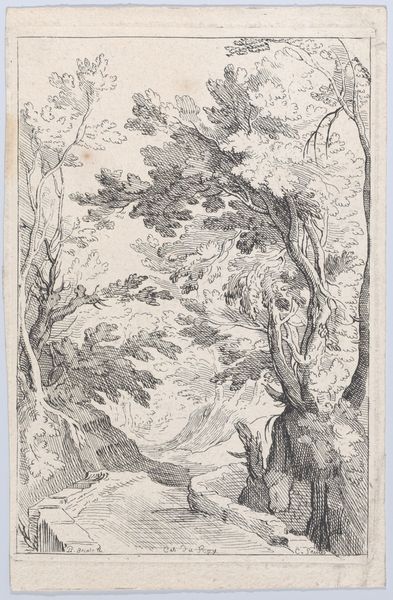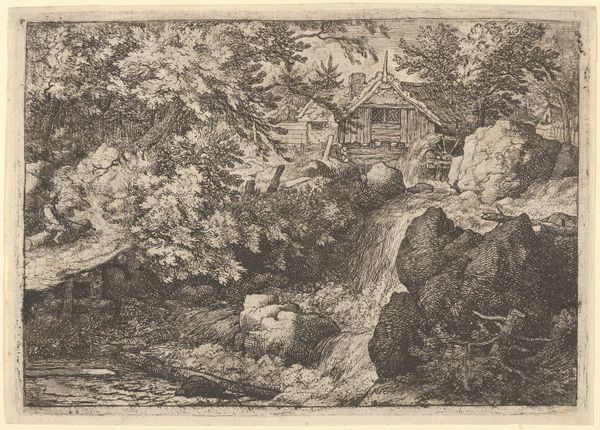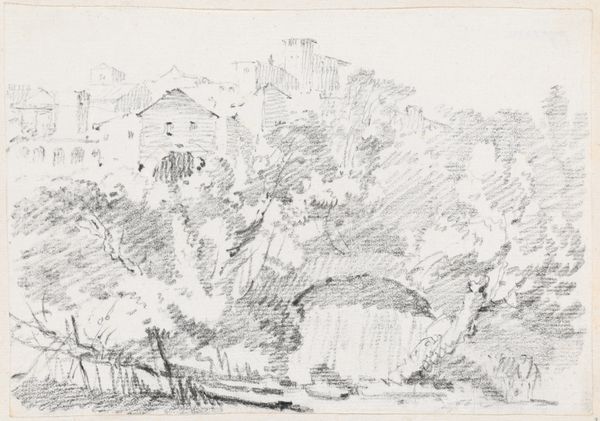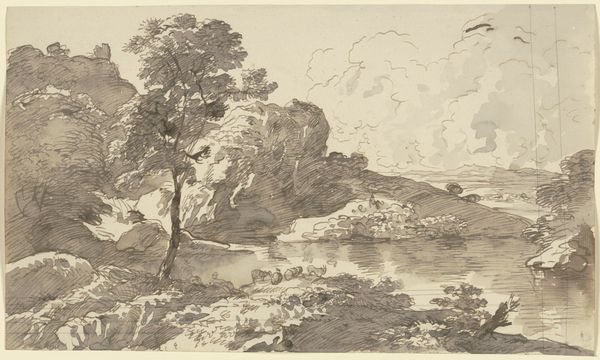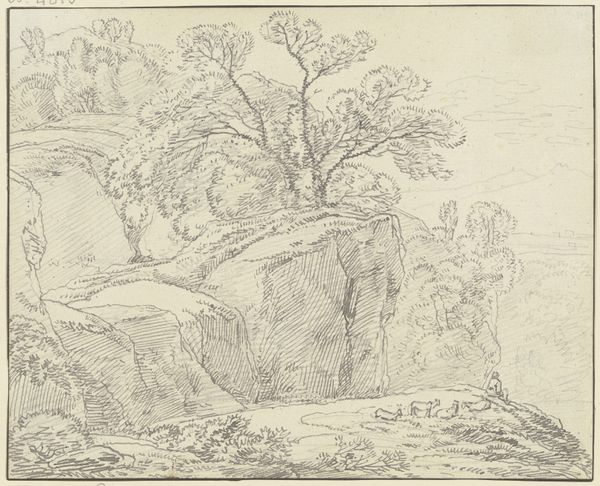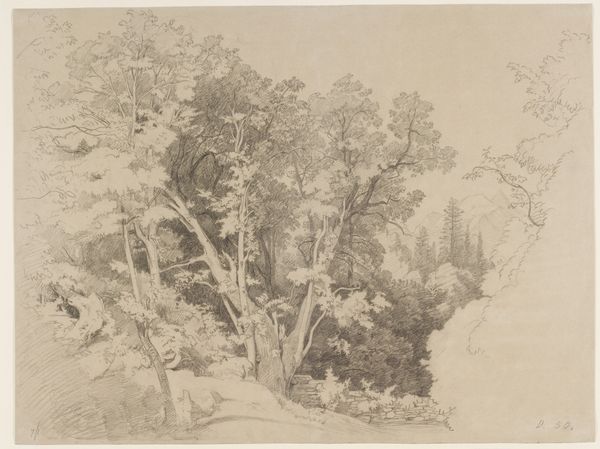
etching
#
baroque
#
etching
#
landscape
#
etching
#
form
#
line
Dimensions: height 173 mm, width 255 mm
Copyright: Rijks Museum: Open Domain
Editor: We are looking at a 17th-century etching titled "Bebost landschap met waterval," or "Wooded landscape with waterfall" made by an anonymous artist. I’m struck by the contrast between the intricate details of the trees and the flowing lines used to represent the waterfall; it almost feels a bit dramatic. What do you make of it? Curator: The artist's use of line is paramount here. Observe how the density and direction of the etched lines create areas of light and shadow, modeling form and suggesting texture. Notice, for instance, how the engraver suggests the roughness of the bark by varying the weight and direction of the lines? How might the diagonal hatching on the rocks indicate the play of light? Editor: Yes, the way the lines describe the rocks versus the water is very different. They are really strategic about texture using simple lines! But the white spaces... those feel deliberate. Curator: Indeed. Consider the function of those untouched spaces. In this complex, linear network, the white spaces not only delineate forms but also create areas of high contrast that catch the viewer’s eye. We can interpret them as moments of visual relief within the density of the etching, and these create the dynamism of the work, no? Editor: Definitely! It highlights the key focal points. Now that I'm considering these formal elements it's all so cohesive, carefully designed. Curator: Precisely. Without understanding line, light, and composition, the image simply becomes a representational scene. Understanding the "how" in this etching allows for deeper understanding. Editor: It's really incredible to see the artist's decisions about line work. Now I have such a deeper appreciation for etchings!
Comments
No comments
Be the first to comment and join the conversation on the ultimate creative platform.
